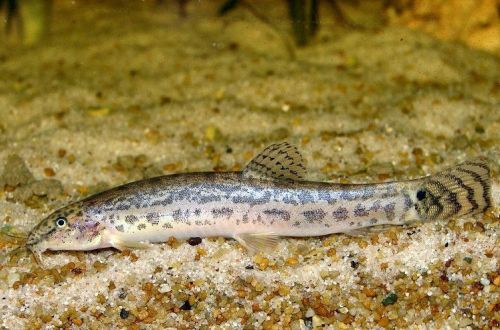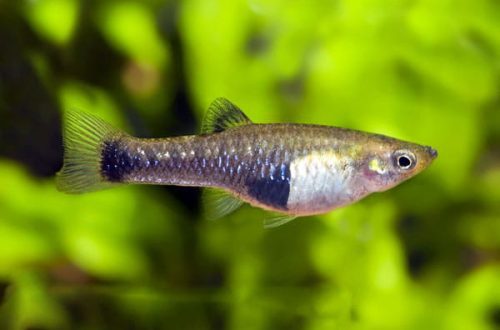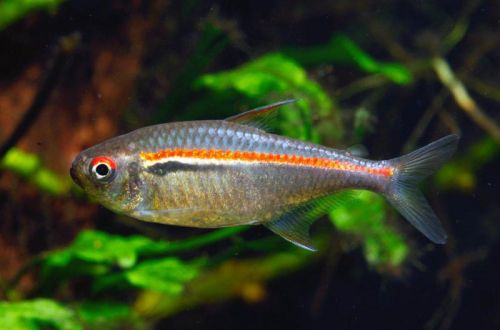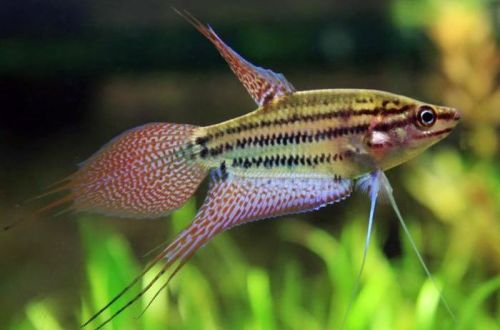
Birmansky Golec
The Burmese Charr, scientific name Lepidocephalichthys berdmorei, belongs to the family Cobitidae (Loachers). The name indicates the region of origin of this species – Burma (now Myanmar) – a state in Southeast Asia. It is considered one of the most common members of the genus and is an excellent choice for beginner aquarists.

Contents
Habitat
The natural distribution range extends from China to the southern provinces of Thailand, Rybka is found in all major river systems in this region, such as the Brahmaputra, Irrawaddy, Chao Phraya, Mekong and others. Prefers the upper reaches of rivers with clean running water and rock substrates, pebbles, underwater tree roots, snags. Depending on the season of the year, for example, during a period of drought, the habitat can change dramatically, turning into stagnant and slow-flowing bodies of water, blooming algae with low oxygen levels.
Brief information:
- The volume of the aquarium – from 60 liters.
- Temperature – 20-25°C
- Value pH — 6.0–8.0
- Water hardness – soft to medium hard (2-15 dGH)
- Substrate type – any
- Lighting – any
- Brackish water – no
- Water movement – moderate / weak
- The size of the fish is 8–10 cm.
- Nutrition – any drowning
- Temperament – peaceful
- Keeping in a group of 3-4 individuals
Description
Adults usually reach a length of 8-10 cm, although specimens of 12 cm are not rare. Females grow somewhat larger than males. The fish has an elongated cylindrical body and a small head. The paired ventral and pectoral fins are oriented horizontally. The tail is rounded and truncated. The body color is sandy with dark yellow hues. The pattern consists of irregular specks on the back and sides of the fish. A characteristic black spot is noticeable at the base of the caudal fin.
Food
In nature, it feeds on insect larvae, crustaceans and other zooplankton. The aquarium will accept most popular protein-rich foods. For example, a daily diet may consist of dry flakes, granules, combined with live or frozen brine shrimp, daphnia, bloodworms.
Maintenance and care, arrangement of the aquarium
The optimal size of the aquarium for a group of 3-4 fish starts from 60-70 liters. The design is arbitrary, it is enough to provide heavy rocky substrates and a large number of shelters at the bottom, at least according to the number of fish, so that they feel safe. It is recommended to provide an internal current simulating the flow of a mountain river. This can be helped by a productive excess power filtering system, or by installing an additional pump. If a current is created in the aquarium, then when choosing live plants, it is worth limiting the choice to unpretentious species from among Anubias, mosses, ferns that can grow on a solid surface (on stones, snags). It is worth noting that the presence of a current is not mandatory for this species, it can perfectly adapt to a completely different environment, for example, an aquarium overgrown with greenery.
Unlike many fish that are also native to flowing waters, the Burmese charr is relatively tolerant of organic waste accumulation due to its ability to live in waters with low oxygen content. However, it should not be added to biologically immature aquariums, and if kept together with other species from similar habitats, appropriate equipment must be installed.
Behavior and Compatibility
It is peacefully tuned in relation to relatives and other species, although it can eat juveniles and eggs in clutches. However, most other fish do the same. It is worth avoiding territorial or aggressive bottom dwellers from among other chars, cichlids, catfish.
Fish diseases
The main cause of disease in aquarium fish is being in unsuitable conditions that negatively affect the immune system and make them prone to various infections. When the first symptoms appear, it is worth first checking the hydrochemical composition of the water for compliance with the pH and dGH values, the presence of excess concentrations of nitrogen cycle products or the presence of impurities. Bringing all values back to normal often leads to recovery. If the symptoms persist, you will have to start medical treatment, more in the section “Diseases of aquarium fish”.





